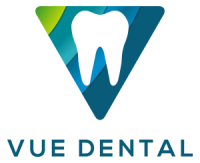
Maintaining proper dental hygiene is essential for maintaining good oral health. Regular brushing, flossing, and dental check-ups are all important parts of oral hygiene, but cleaning dental instruments is also a crucial part of the process. Dental instruments can harbour harmful bacteria that can lead to infections and other complications if not cleaned properly. In this article, we will discuss how to clean dental instruments to ensure they are safe and effective for use in dental procedures.
The Importance of Cleaning Dental Instruments
Dental instruments are used in a variety of procedures, from routine cleanings to complex oral surgeries. Because these instruments come into contact with the mouth and other bodily fluids, they can harbour bacteria and other pathogens that can cause infections or other health problems if not cleaned properly. This is especially true for instruments that are reused multiple times. To ensure that dental instruments are safe and effective for use in procedures, it is essential to clean them thoroughly between uses.
Choosing Dental Instruments
Key to your practice is choosing the right instruments—and this may not be a good place to cut corners budget-wise. Of course you are dictated by cost to a certain extent, and there is a flourishing second-hand market, but this should be approached with caution. It’s important to canvass opinion about all equipment— this includes product reviews, word of mouth from other dentists, and specialists. As a dental professional you should be aware of the general reputation of the manufacturer in question.

Pre-cleaning
The first step in cleaning dental instruments is to pre-clean them to remove any debris, blood, or other organic matter. This can be done using a soft-bristled brush or ultrasonic cleaner. Use a brush to remove any debris from the instrument’s surface, then rinse the instrument with water.
If using an ultrasonic cleaner, place the instruments in the cleaning solution and run the ultrasonic cleaner for the recommended amount of time. The ultrasonic waves create high-frequency bubbles that remove debris and contaminants from the instruments.
Disinfecting
After pre-cleaning, it’s time to disinfect the instruments. Disinfectants kill or inactivate microorganisms such as bacteria, viruses, and fungi. There are several different types of disinfectants available, including chemical disinfectants, steam sterilisation, and dry heat sterilisation. Choose the method of disinfection that is appropriate for the instruments being cleaned.
Chemical disinfectants can be used for many dental instruments, including handpieces, burs, and forceps. There are two types of chemical disinfectants: high-level and intermediate-level. High-level disinfectants kill all microorganisms, including bacterial spores, while intermediate-level disinfectants kill most microorganisms, but not spores. Always follow the manufacturer’s instructions for the specific disinfectant being used.
Steam sterilisation is another common method of disinfection for dental instruments. This method uses high-pressure steam to kill microorganisms. Steam sterilisation is appropriate for instruments that can withstand high heat and moisture, such as metal handpieces, burs, and forceps.
Dry heat sterilisation is a method of sterilisation that uses high heat to kill microorganisms. This method is suitable for instruments that cannot withstand moisture, such as certain types of handpieces and burs.
Drying and Storage
After disinfecting, it’s important to dry the instruments thoroughly to prevent rust or other damage. Use a clean towel or air-dry the instruments. Once the instruments are dry, store them in a clean, dry place. Avoid storing them in a damp or humid area, as this can lead to rust or other damage.

Best Practices for Cleaning Dental Instruments
In addition to following the steps outlined above, there are several best practices to keep in mind when cleaning dental instruments:
- Use the correct cleaning and disinfecting solutions for the instruments being cleaned. Always follow the manufacturer’s instructions for the specific solutions being used.
- Wear personal protective equipment (PPE) when cleaning and handling dental instruments. This may include gloves, masks, and eye protection.
- Inspect instruments regularly for signs of wear or damage. Replace any instruments that are worn or damaged.
- Use an ultrasonic cleaner to clean instruments whenever possible.
Ultimately, the quality of care you can provide to your patients is the bottom line. So maintenance of your dental equipment is paramount to running your business safely, effectively, and as painlessly as possible.
